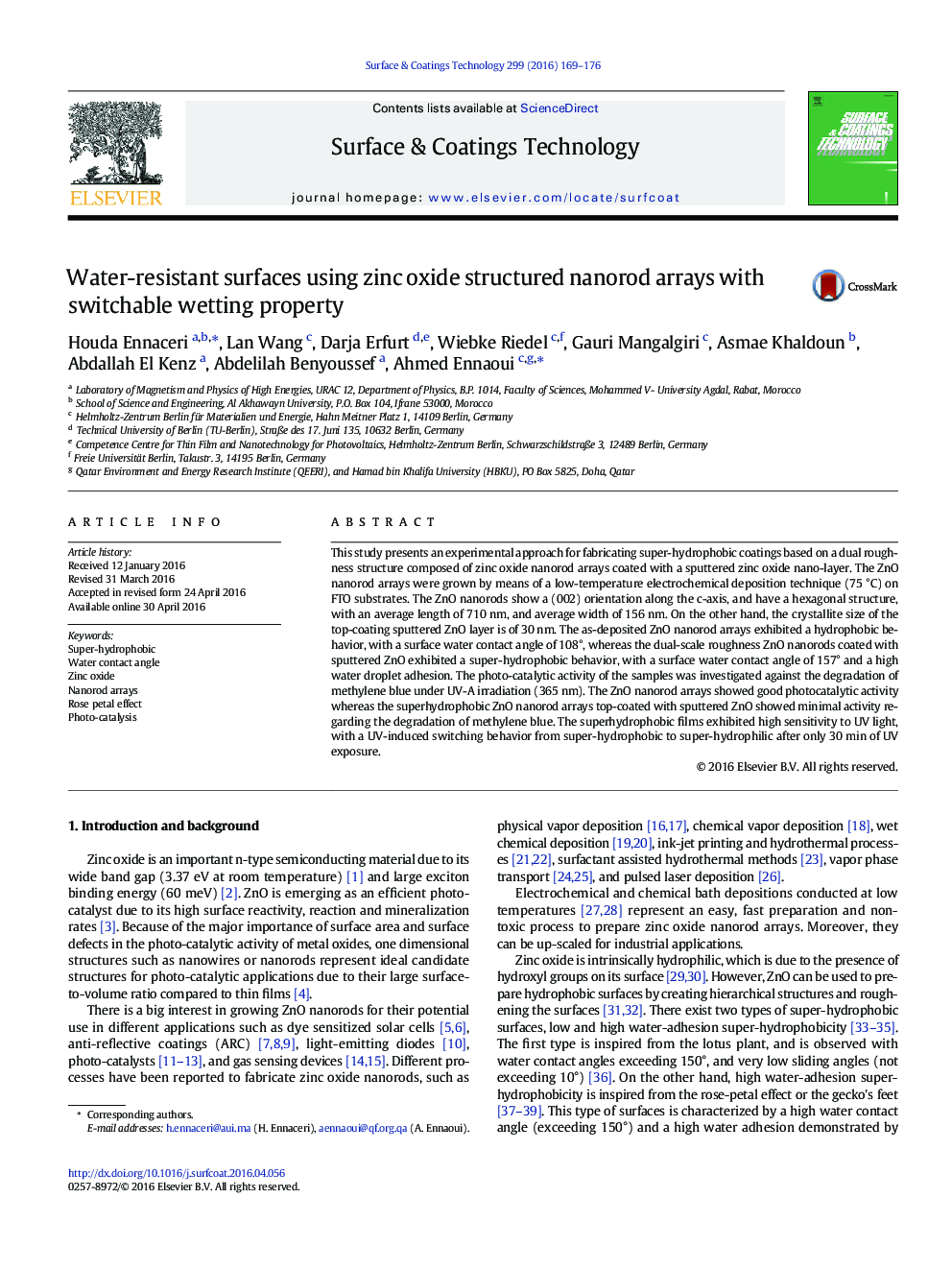| Article ID | Journal | Published Year | Pages | File Type |
|---|---|---|---|---|
| 1656376 | Surface and Coatings Technology | 2016 | 8 Pages |
Abstract
This study presents an experimental approach for fabricating super-hydrophobic coatings based on a dual roughness structure composed of zinc oxide nanorod arrays coated with a sputtered zinc oxide nano-layer. The ZnO nanorod arrays were grown by means of a low-temperature electrochemical deposition technique (75 °C) on FTO substrates. The ZnO nanorods show a (002) orientation along the c-axis, and have a hexagonal structure, with an average length of 710 nm, and average width of 156 nm. On the other hand, the crystallite size of the top-coating sputtered ZnO layer is of 30 nm. The as-deposited ZnO nanorod arrays exhibited a hydrophobic behavior, with a surface water contact angle of 108°, whereas the dual-scale roughness ZnO nanorods coated with sputtered ZnO exhibited a super-hydrophobic behavior, with a surface water contact angle of 157° and a high water droplet adhesion. The photo-catalytic activity of the samples was investigated against the degradation of methylene blue under UV-A irradiation (365 nm). The ZnO nanorod arrays showed good photocatalytic activity whereas the superhydrophobic ZnO nanorod arrays top-coated with sputtered ZnO showed minimal activity regarding the degradation of methylene blue. The superhydrophobic films exhibited high sensitivity to UV light, with a UV-induced switching behavior from super-hydrophobic to super-hydrophilic after only 30 min of UV exposure.
Related Topics
Physical Sciences and Engineering
Materials Science
Nanotechnology
Authors
Houda Ennaceri, Lan Wang, Darja Erfurt, Wiebke Riedel, Gauri Mangalgiri, Asmae Khaldoun, Abdallah El Kenz, Abdelilah Benyoussef, Ahmed Ennaoui,
